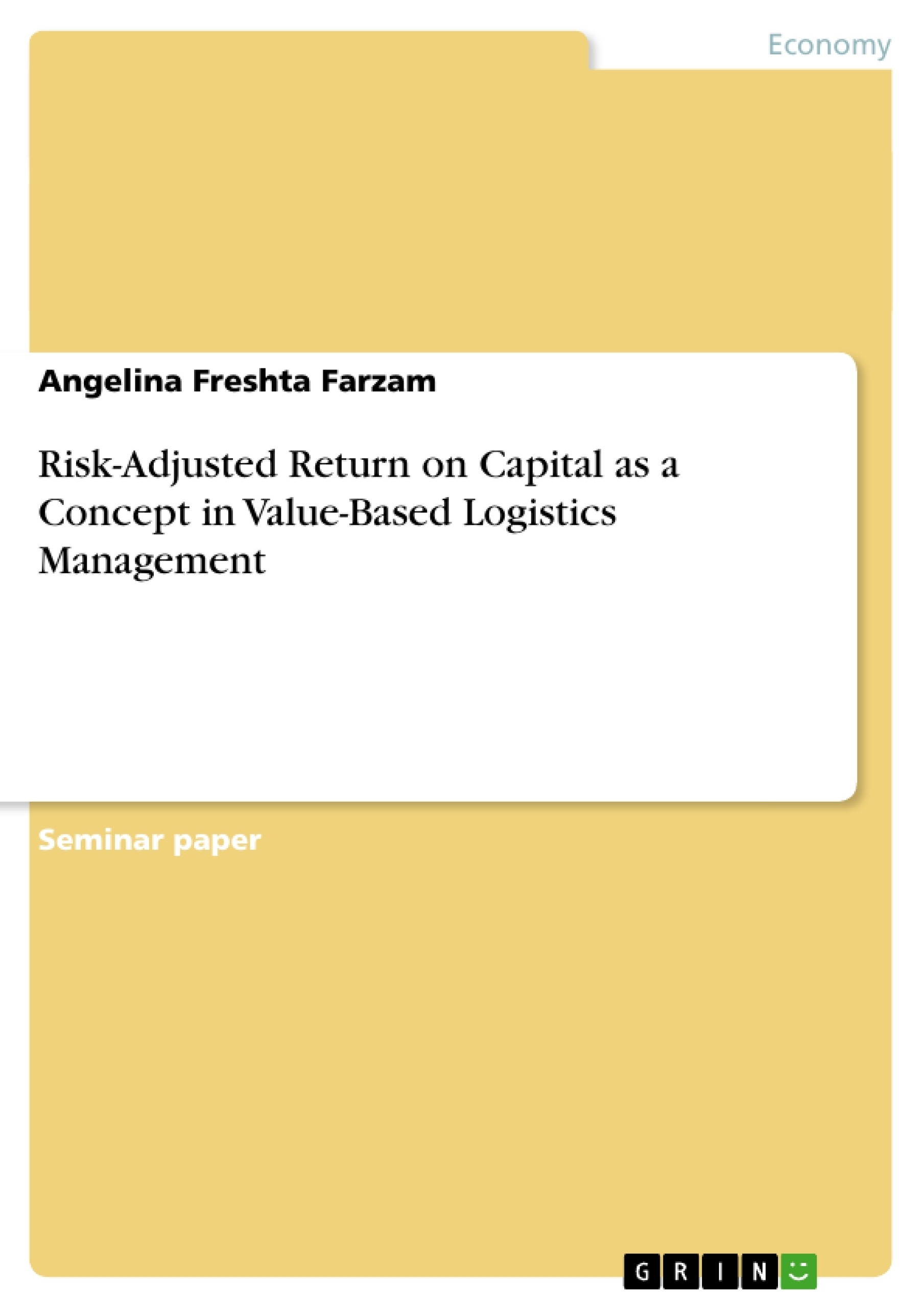Extrait
Table of Contents
1. Introduction
2. RAROC as a Financial Instrument to IncreaseValue of a Company
I. RAROC
II. Value-Based Management (VBM)
III. Rating
3. The New Era of Risk Prevention in Logistics:
Risk-Adjusted Price-Rating or Risk-Based Bonus?
4. Conclusion
Reference
1.Introduction
Continued deflationary trends in many markets around the world are creating greater pressure for risk prevention in order that margins can be maintained. Customers and consumers are increasingly value driven. In this challenging world, there is a growing recognition that creative pricing strategies combined with effective supply chain management provide opportunities for significant risk capital cost reduction and yet increased profits.
This paper presents evidence and a new model to support this viewpoint and suggests an approach to supply chain alignment that can enable cost reduction opportunities to be identified and higher profits to be achieved through collaborative strategies.
For a good risk management the bank uses, among other figures, RORAC, RAROC and RARORAC to minimize the risk that each credit-borrower brings along. In the financing sector, therefore, they created the credit-ranking system. Now the next question would be, why not implement that credit-ranking in logistics to minimize risks in order to create a certain risk capital as security. Especially in the airfreight segment, where there is a lot of environmental risk involved, there has to be created a new way to prevent from high unexpected losses.
The question that has to be answered yet is how to implement the risk capital in the price without losing clients.
Logistics companies offer airfreight services to clients, where everyone receives the same price level without regarding the risk that each client brings along.
So, it is proposed to copy and paste the credit risk system of the banking system in the logistics.
However, Jehle claims that today, the development of a value-based risk management in logistics is not very far and still needs a lot of work to be an optimal support for logistics. (Jehle, 2005, p.155)
In the following chapters, therefore, I will provide a key to understanding the concept of RAROC as a financial instrument to prevent from risk and the link between RAROC and Value-Based Management in Logistics. Knowing these links between these terms, it will be more clear how RAROC can influence the value of a logistics company positively.
2. RAROC as a financial instrument to increase value of a company
I. RAROC
Why does risk even exist? According to Jehle, the increasing meaning of risk management in supply chain management and logistics roots from two megatrends:
a) the globalization offers a variety of location advantages worldwide, and those advantages can mostly lead to risks out of geographical and cultural distances.
b) momentarily, we are in a transitional phase from an industry-governing society to a knowledge society; that can create risks for companies whose strengths can be taken through the intangible assets (Knowledge) and not through tangible assets. (Jehle, 2005, p.154)
Bilz claims that you can trace and identify risk from lack of supplier’s quality that is recognized by customer complaints. (Bilz, 2000, p.60)
In the banking system, risk is traded off against benefit. RAROC is defined as the ratio of risk adjusted return to economic capital. Economic capital is a function of market risk, credit risk, and operational risk.
RAROC system allocates capital for 2 basic reasons: risk management and performance evaluation.
For risk management purposes, the main goal of allocating capital to individual business units is to determine the bank's optimal capital structure (i.e., economic capital allocation is closely correlated with individual business risk).
As a performance evaluation tool, it allows banks to assign capital to business units based on the economic value added of each unit.
To enable the analysis of RAROC, it is important to systemize the dimensions. There are two dimensions, the risk-adjusted and the non-risk-adjusted one. The non-risk-adjusted dimension could be the RoE, RoA, RoI or Earnings per Share and the risk-adjusted one could be RAROC or RARORAC. Both require as data-basis the data from annual financial statements that are created after IFRS, US-GAAP (or national firms after HGB). (Bielefeld,, 2005, p. 162)
RAPM (Risk-adjusted Performance Measurement) is another indicator that mainly works with risk and helps in strategic, long-term decision making.
There are various ways to describe the value of a company. EVA (Economic Value Added) and VaR are two of them. Value at Risk (VaR) is another concept of risk measurement, whereas this one is much simpler to investigate.
However, the problem of the VaR is that it is only valid and helpful in “normal” times, and fails when it comes to unpredictable and unforeseen losses. (Bielefeld,, 2005, p. 163)
The expected return of an investment exists of a risk free interest rate including the product of the risk-bonus and the risk of investment. Higher return comes from higher risk. If you have a higher expected return, the difference of actual and expected return is the ‘differential return’ or ‘risk-adjusted return’. There are various ways to define the risk-adjusted figure. (Bielefeld,, 2005, p. 164)
Depending of the combination, there are three different famous types of RAPM-figures: RORAC, RAROC, RARORAC.
1. RORAC (return on risk adjusted capital) is the result of banking business after
expected loss in relation to the risk capital:
RORAC= Net-result – expected loss / risk capital
[...]
- Citation du texte
- Angelina Freshta Farzam (Auteur), 2007, Risk-Adjusted Return on Capital as a Concept in Value-Based Logistics Management, Munich, GRIN Verlag, https://www.grin.com/document/135548
Devenir un auteur






















Commentaires